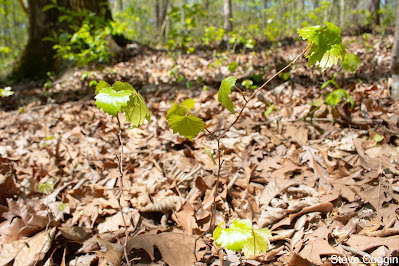 |
| Anhinga (Anhinga anhinga) sunning. Green Cay Wetlands, Palm Beach County, Florida. |
If I had grown up in Peoria or Palo Alto, Snakebirds would not have been in my history. But I spent my formative years in Pompano Beach, Florida and Snakebirds were part of the landscape. I saw them in the canals, rock pits and the Everglades of my youth. Anhinga is their proper name, but my father called them Snakebird or Water Turkey.
 |
| Female Anhinga. Green Cay Wetlands, Palm Beach County, Florida. |
Anhingas are odd birds with odd names. The name Anhinga comes from the Tepu language
of Brazil meaning “Devil Bird”. The
nomenclature gets even more interesting when considering the bird’s scientific
name, Anhinga anhinga. Notice both
the genus and species names are the same. This is what is called a tautonym in the world of taxonomy. While tautonyms are prohibited
in botanical nomenclature they are allowed in animals. Many common animals, like the American Bison
(Bison bison) and Northern Cardinal (Cardinalis cardinalis),
sport tautonyms. To make things even
more complicated there are three other species of Anhinga found around
the world, but they are not called Anhingas, they are named Darters.
 |
| Male Anhinga preening. Wakodahatchee Wetlands, Palm Beach County, Florida. |
 |
| Female Anhinga. Huntington Beach State Park, South Carolina. |
Anhingas are large, dark water birds with a long neck, webbed feet and dagger-like beaks. Male Anhingas are black with silver feathers on the back and wings. Female and immature Anhingas are brown with light brown heads and necks. Both sexes have long fan-like tails tipped with brown that resemble those of Wild Turkeys (Meleagris gallopavo). Anhingas swim underwater where they feed on fish and other small animals they impale on their sharp beaks. They often swim with just their S-shaped neck above the surface of the water. This habit led to the common name, Snakebird.
 |
| Anhinga swimming with its snake-like neck above water. Wakodahatchee Wetlands, Palm Beach County, Florida. |
Anhingas are denizens of southern swamps, but their range extends south into Mexico, Central American, some Caribbean islands and South America. My records show we have encountered Anhingas 119 times. Most of the observations have been in Florida but we have seen Anhingas in Georgia, South Carolina, North Carolina and Texas. We have also found them in the American tropics of Belize, Costa Rica and Panama. Since Anhingas are often found in warm locales they need ways to keep deal with the heat. Swimming is one way to cool off but Anhingas can also flutter the gular pouch on their necks to dissipate heat, much like a dog panting.
 |
| Anhinga swimming with its body submerged. Wakodahatchee Wetlands, Palm Beach County, Florida. |
On our trips to Florida, we will often see an Anhinga perched on a branch drying its wings in the sun. Most waterbirds apply oil to their feathers to waterproof them and promote buoyancy. The oil is produced by the bird’s uropygial or preen gland at the base of the tail. Preening cleans the feathers, removes parasites and oils the feathers. But Anhingas have vestigial uropygial glands that produces little oil, so their feathers take up water as they swim. While this helps them stay underwater, Anhingas must dry their feathers before flying again.
 |
| Anhinga sunning. Its uropygial gland is visible just above the base of the tail. Wakodahatchee Wetlands, Palm Beach County, Florida. |
 |
| Anhinga in flight. Wakodahatchee Wetlands, Palm Beach County, Florida. |
Anhingas are quite elegant on the wing. We see them soaring on high on thermals where they look like a flying cross with their long wings, neck and tail. Anhingas build nests of loose sticks where they raise their broods of dinosaurian babies. The young Anhingas start with a coat of white down that is gradually replaced by darker feathers. Young Anhingas feed by sticking their sharp beaks down the parent's throats, a dangerous looking exercise.
 |
| Young Anhinga on nest. Wakodahatchee Wetlands, Palm Beach County, Florida. |
 |
| Parent feeding a juvenile Anhinga. Green Cay Wetlands, Palm Beach County, Florida. |
The Anhinga is another species that is extending its range and increasing its population due to climate change. In the 1800s Anhingas in the United States were limited to coastal regions of the Southeast. Wilmington, North Carolina was the northern limit of the Anhinga nesting range in the 19th century and they were rarely seen on the Piedmont. Now Anhingas breed throughout the Southeast and are reported in summer from New York to Oklahoma. More locations in the northern United States can expect Snakebirds in their future. Anhingas are so distinctive, with their snaky neck and turkey tails, they always impress wherever they are found.
 |
| Anhinga. Wakodahatchee Wetlands, Palm Beach County, Florida. |










